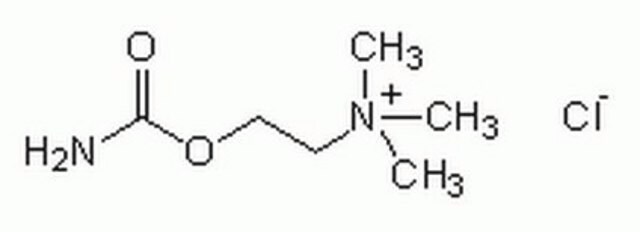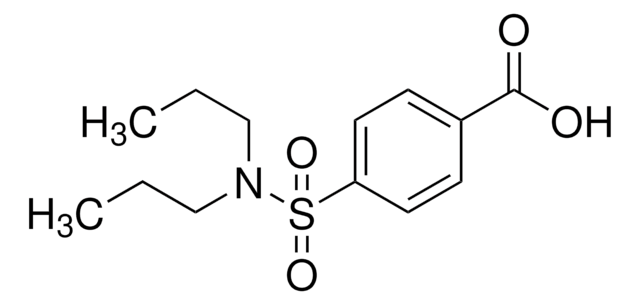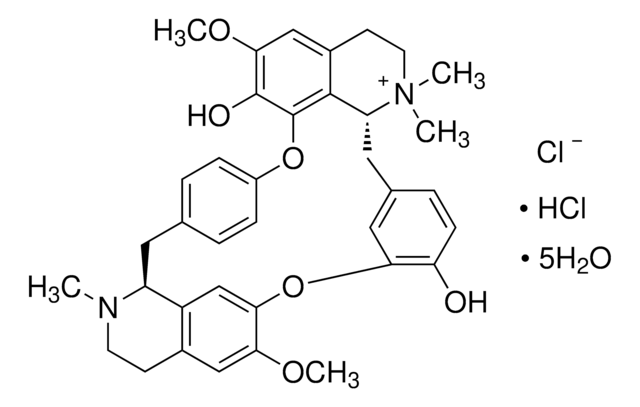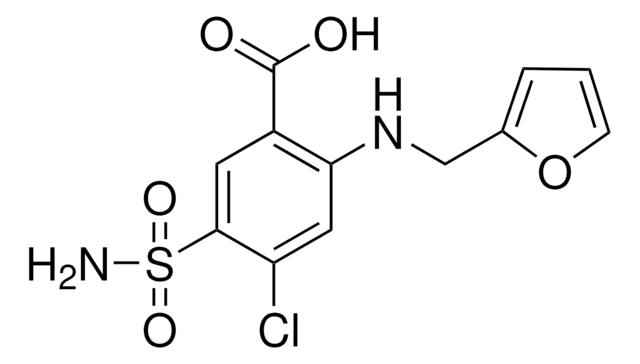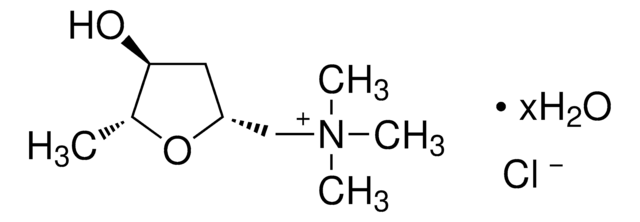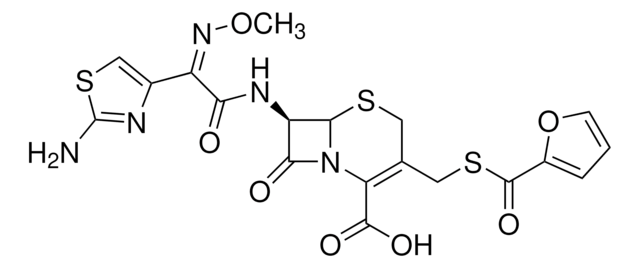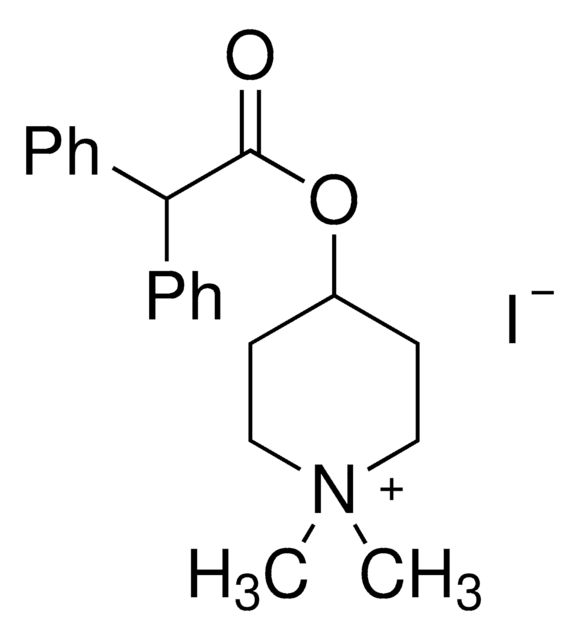C4382
Carbamoylcholine chloride
≥98% (titration), crystalline
Sinónimos:
(2-Hydroxyethyl)trimethylammonium chloride carbamate, Carbachol, Carbamylcholine chloride
About This Item
Productos recomendados
assay
≥98% (titration)
form
crystalline
color
white
mp
210 °C (dec.) (lit.)
solubility
H2O: 1 g/mL
ethanol: 20 mg/mL
SMILES string
[Cl-].C[N+](C)(C)CCOC(N)=O
InChI
1S/C6H14N2O2.ClH/c1-8(2,3)4-5-10-6(7)9;/h4-5H2,1-3H3,(H-,7,9);1H
InChI key
AIXAANGOTKPUOY-UHFFFAOYSA-N
Gene Information
human ... CHRM1(1128) , CHRM2(1129) , CHRM3(1131) , CHRM4(1132) , CHRM5(1133) , CHRNA2(1135)
mouse ... Chrm1(12669)
rat ... Chrm1(25229) , Chrm2(81645) , Chrm3(24260) , Chrna2(170945) , Chrna3(25101) , Chrna4(25590)
¿Está buscando productos similares? Visita Guía de comparación de productos
Categorías relacionadas
Application
- to stimulate insulin secretion in transgenic mice
- to induce contraction of undifferentiated and differentiated human adipose-derived stem cells (hASCs)
- to mediate constriction of iris in pupillary light reflex studies in mice
Biochem/physiol Actions
Features and Benefits
signalword
Danger
hcodes
Hazard Classifications
Acute Tox. 2 Oral
Storage Class
6.1A - Combustible acute toxic Cat. 1 and 2 / very toxic hazardous materials
wgk_germany
WGK 3
flash_point_f
Not applicable
flash_point_c
Not applicable
ppe
Eyeshields, Faceshields, Gloves, type P2 (EN 143) respirator cartridges
Elija entre una de las versiones más recientes:
¿Ya tiene este producto?
Encuentre la documentación para los productos que ha comprado recientemente en la Biblioteca de documentos.
Los clientes también vieron
Nuestro equipo de científicos tiene experiencia en todas las áreas de investigación: Ciencias de la vida, Ciencia de los materiales, Síntesis química, Cromatografía, Analítica y muchas otras.
Póngase en contacto con el Servicio técnico

